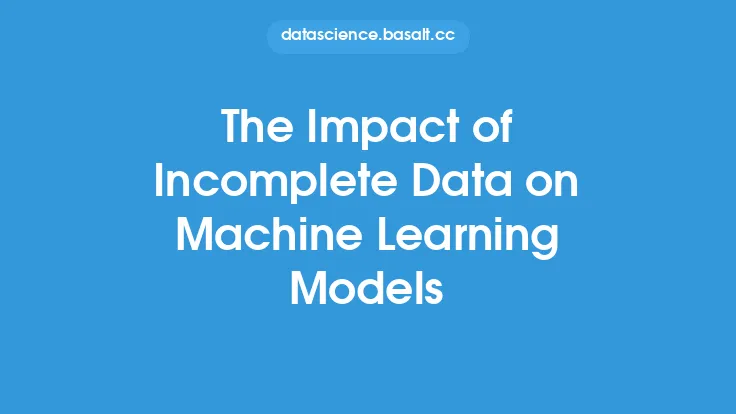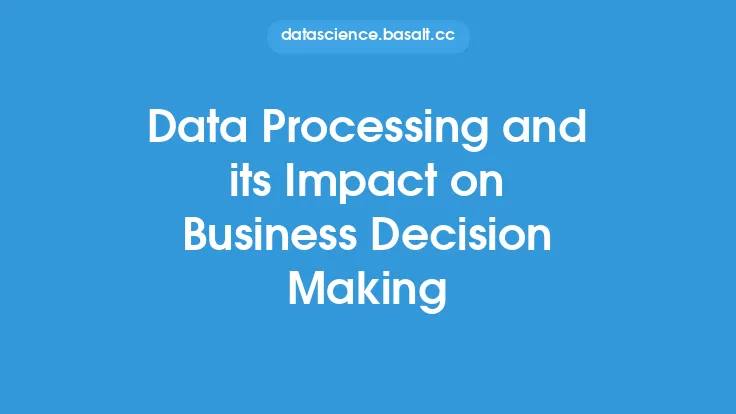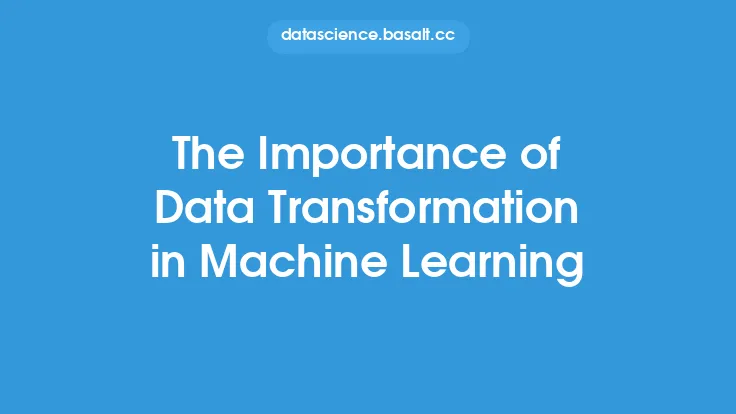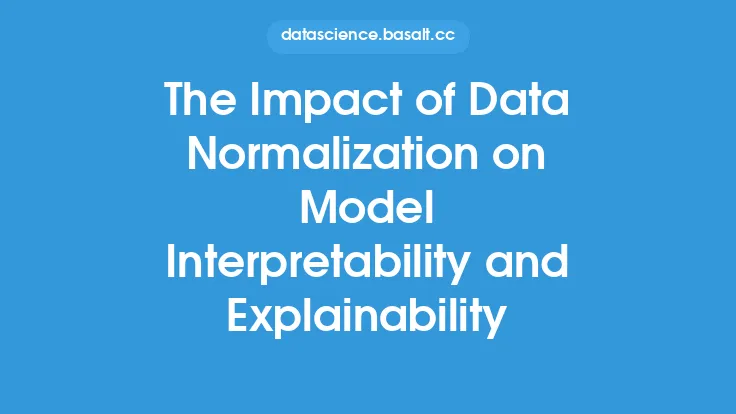Data standardization is a crucial step in the data preprocessing pipeline, particularly when it comes to machine learning models. The quality of the data has a direct impact on the performance of these models, and standardization plays a key role in ensuring that the data is consistent and reliable. In this article, we will delve into the world of data standardization and its impact on machine learning models, exploring the various techniques and methods used to standardize data, as well as the benefits and challenges associated with this process.
Introduction to Data Standardization
Data standardization is the process of transforming raw data into a consistent format, making it easier to analyze and process. This involves converting data into a common unit of measurement, handling missing values, and removing outliers. Standardization is essential in machine learning, as it helps to prevent features with large ranges from dominating the model, and ensures that all features are on the same scale. This, in turn, improves the stability and performance of the model.
Types of Data Standardization
There are several types of data standardization, each with its own strengths and weaknesses. Some of the most common techniques include:
- Min-Max Scaler: This method scales the data to a specific range, usually between 0 and 1, to prevent features with large ranges from dominating the model.
- Standard Scaler: This technique standardizes the data by subtracting the mean and dividing by the standard deviation, resulting in a mean of 0 and a standard deviation of 1.
- Log Scaling: This method is used for data that follows a logarithmic distribution, such as income or population data.
- Robust Scaler: This technique is used to scale the data, while also handling outliers and missing values.
Impact of Data Standardization on Machine Learning Models
Data standardization has a significant impact on the performance of machine learning models. Some of the benefits of standardization include:
- Improved Model Performance: Standardization helps to prevent features with large ranges from dominating the model, resulting in improved performance and stability.
- Reduced Risk of Overfitting: Standardization reduces the risk of overfitting, as the model is less likely to be biased towards features with large ranges.
- Increased Interpretability: Standardization makes it easier to interpret the results of the model, as all features are on the same scale.
Challenges and Limitations of Data Standardization
While data standardization is a crucial step in the data preprocessing pipeline, it also has its challenges and limitations. Some of the common challenges include:
- Handling Missing Values: Standardization can be challenging when dealing with missing values, as it can be difficult to determine the best approach to handle them.
- Outliers and Anomalies: Standardization can be affected by outliers and anomalies in the data, which can skew the results of the model.
- Non-Linear Relationships: Standardization can be challenging when dealing with non-linear relationships between features, as it can be difficult to capture these relationships using traditional standardization techniques.
Best Practices for Data Standardization
To get the most out of data standardization, it's essential to follow best practices. Some of the key best practices include:
- Understand the Data: Before standardizing the data, it's essential to understand the distribution of the data and the relationships between features.
- Choose the Right Technique: The choice of standardization technique will depend on the specific problem and data, so it's essential to choose the right technique for the task at hand.
- Monitor and Evaluate: It's essential to monitor and evaluate the performance of the model after standardization, to ensure that the standardization technique is having the desired effect.
Conclusion
Data standardization is a critical step in the data preprocessing pipeline, particularly when it comes to machine learning models. By understanding the different types of data standardization, the impact of standardization on machine learning models, and the challenges and limitations associated with this process, data scientists and analysts can ensure that their models are performing at their best. By following best practices and choosing the right standardization technique for the task at hand, it's possible to unlock the full potential of machine learning models and gain valuable insights from data.





